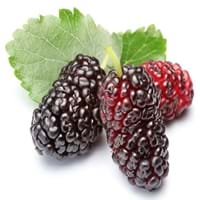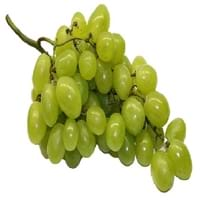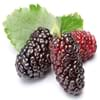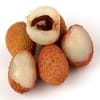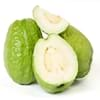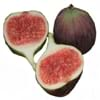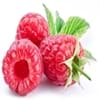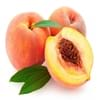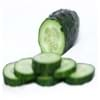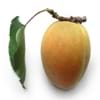Health Benefits
Anti-aging benefits, Boosts immune system, Cancer prevention, Flu treatment, Hair care, Heart care, Improves eye vision, Increases metabolic rate, Kidney stone treatment, Maintains healthy cholesterol level, Skin cleansing, Skin rejuvenation, Treatment of common cold, Treatment of skin Diseases
Cancer prevention, Kidney stone treatment, Prevents constipation, Treatment of alzheimer's disease
General Benefits
Boosts immune system, Controls blood sugar levels, Flu treatment, Improves eye vision, Maintains healthy cholesterol level, Treatment of common cold
Digestive aid, Improves eye vision, Maintains healthy cholesterol level, Treatment of migraine
Skin Benefits
Anti-aging benefits, Skin cleansing, Treatment of skin diseases
Anti-aging benefits, Heals sunburn, Skin rejuvenation, Treatment of dark spots
Hair Benefits
Protects hair, Regulates hair growth
Prevents hair loss, Regulates hair growth, Treatment of dandruff
Allergy Symptoms
Breathing difficulty, Itching, Nasal congestion, Redness of eyes, Runny nose, Sneezing
Anaphylaxis, Asthma, Breathing difficulty, Coughing, Drop in blood pressure, Hives, Skin rash, Stuffy nose, Swelling of mouth, tongue or lips, Wheezing
Side Effects
Decrease in blood sugar levels, Allergic reaction
Allergic reaction, Skin rash, Might slow down the process of blood clotting
Best Time to Eat
Best if taken as a breakfast (or empty stomach), As a snack in the late afternoon, Don't consume at night and before bed, Eat the fresh ones, avoid mixing with any other foods, don't eat after meal., Morning time (before lunch)
As a snack in the late afternoon, Don't consume at night and before bed, Eat the fresh ones, avoid mixing with any other foods, don't eat after meal., Morning time (before lunch)
Vitamin B5 (Pantothenic Acid)
Not Available
Vitamin C (Ascorbic Acid)
Vitamin K (Phyllochinone)
Phytosterol
Not Available
Calories in Fresh Fruit with Peel
Calories in Fresh Fruit without Peel
Not Available
Not Available
Calories in Canned Form
Not Available
Season
Spring, Summer
Autumn, Summer
Varieties
Charparral, Pendula, Teas, Bellaire and Lingan
Cabernet Sauvignon, Merlot, Pinot Noir, Syrah/Shiraz and Zinfandel
Color
Pink, Purple, White
Green, Red
Inside Color
Pink
Light Green
Origin
China
Western Asia, Central Europe
Soil Type
Clay, Loam
Clay loam, Sandy loam
Climatic Conditions
Sunny
Warm
Facts about
- It can take up to 10 years for a tree to produce mulberry fruit.
- Mulberry leaves are fed to silkworms to enhance silk production.
- In Germany, they say that devil uses root of mulberry tree to polish his boots.
- If left alone, a grapevine can spread 50 feet and even more.
- There are more than 8,000 varieties of grape worldwide.
- They are available in 7 different colors: red, green, white, black, purple, blue and golden.
Other Countries
Colombia, Egypt, India, Indonesia, Kenya, Mexico, Pakistan, Peru, Russia, United States of America
Argentina, Armenia, Australia, Chile, France, Iran, Italy, Portugal, Romania, Turkey, United States of America
Top Importer
Not Available
United States of America
Botanical Name
Morus Alba
Vitis vinifera
Synonym
Morus atropurpurea or Morus multicaulis
Not Available
Subkingdom
Tracheobionta
Tracheobionta
Division
Magnoliophyta
Magnoliophyta
Class
Magnoliopsida
Magnoliopsida
Subclass
Alismidae
Rosidae
Species
M. alba
Vitis vinifera
Generic Group
Mulberry
Grape
Compare Mulberry and Grape
It is important compare Mulberry and Grape as both the fruits have a different nutritional value. Their comparison can be done on the basis of their vitamin and mineral content, calories, benefits as well as characteristics, making it easier for us to choose the best fruit for our diet. Their general health benefits are as follows:
Mulberry Benefits: boosts immune system, controls blood sugar levels, flu treatment, improves eye vision, maintains healthy cholesterol level and treatment of common cold.
Grape Benefits: digestive aid, improves eye vision, maintains healthy cholesterol level and treatment of migraine.
Fruits are also used as a remedy for various hair problems. The hair benefits of Mulberry are: protects hair and regulates hair growth and hair benefits of Grape are: prevents hair loss, regulates hair growth and treatment of dandruff. Some fruits are known to cause allergic reactions. The allergy symptoms of first fruit are: breathing difficulty, itching, nasal congestion, redness of eyes, runny nose and sneezing and the symptoms of second fruit are: anaphylaxis, asthma, breathing difficulty, coughing, drop in blood pressure, hives, skin rash, stuffy nose, swelling of mouth tongue or lips and wheezing. Get sorted Mulberry vs Grape comparison with the help of fruit comparison tool by fruitvs.com.
